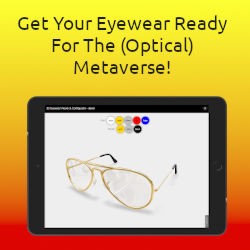Industry News
Electronic Contact Lenses Demonstrated For First Time
 US Startup company E-Vision Smart Optics has announced the successful completion of an electronic contact lens platform device to demonstrate the ability to electronically change diopters in real time to prospective licensing partners.
US Startup company E-Vision Smart Optics has announced the successful completion of an electronic contact lens platform device to demonstrate the ability to electronically change diopters in real time to prospective licensing partners.
“People are amazed as they see the lens in action, realizing how this technology can impact our industry by offering electronic diopter control. Our first in category electronically controlled features must be seen to believe”, Joel D. Zychick, President & CEO e-Vision.
According to the company, the electronic contact lenses will offer impressive features including onboard power/control, remote setting and activation, dimensions that fit within current contact lens size requirements, and up to four diopters of control, or more, that can be switched in 50 milliseconds.
Sandwiched between three thin layers of polymer are two layers of liquid crystal, 8 microns thick. In the unpowered mode, the liquid crystal molecules are in their relaxed state and provide no optical power. When a small voltage is applied, the liquid crystal molecules begin to change their optical properties resulting in focus changes in the lens. The current device can be switched to one, two or three diopters of optical power but many other combinations can be designed into it, including higher and more distinct optical powers. The commercial product will have its base optical power molded into the polymer, while the liquid crystal changes the optical power as required. For example, if someone was near sighted, the contact lens would be molded to provide the user with best corrected distance vision, then be able to switch as needed to pre-programmed near focus, close intermediate focus, intermediate focus and distance. All power, electronics, optics and communication components will be inside of the contact lens. The power source will provide energy for a full day’s use and be recharged wirelessly when removed from the user’s eye overnight.
The electronic contact lens unit was created to demonstrate how the final product will perform. A small camera allows the focus changes to be seen on a monitor, plus the lens can be removed from the camera and hand-held to look through and see with your own eyes the focus changes. “The device makes an impressive statement when you consider the scale required for the electronics and the increased performance electronic contact lenses will provide”, Tony Van Heugten – Chief Technology Officer of e-Vision. Helbling, known around the world as a leader in electronic advancements in integrated technologies, is a valued partner behind this new technology.


